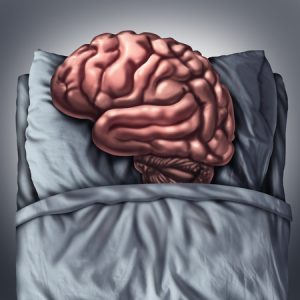A Glimpse at the Glymphatic System

Sleep science is pretty new. Compared with other medical specialties, it’s just a baby. Prior to the 1950s, studies about human sleep were rarely being pursued. Isn’t that amazing?
We’ve learned quite a lot about the biological mechanisms of sleep since the mid-20th century. REM sleep has been studied and documented. The circadian rhythm, first observed and studied almost 300 years ago, has been explored in-depth. Doctors identified obstructive sleep apnea and other sleep disorders, and they began investigating effective treatments to help their patients.
But the questions, “What is sleep?” and “Why do we sleep?” have remained somewhat of a mystery.
A recent discovery may help us begin to understand these mysteries.
Discovery of the Glymphatic System
In 2013, Danish neuroscientist Maiken Nedergaard discovered what she called the glymphatic system while working at University of Rochester Medical Center. Dr. Nedergaard named it “glymphatic” because of the glial cells involved and its basic resemblance to the body’s lymphatic system. And one of the interesting things she found was that this system goes to work during sleep.
A little background information may help here.
The lymphatic system is a critical part of our bodies’ immune system. It neutralizes intruders like bacteria and viruses and flushes them out through lymphatic vessels. It also disposes of toxins and waste products produced by cells’ normal functions like metabolism.
Glial cells – aka glia – are one of two types of cells in the central nervous system. The other type of cells are neurons. While neurons transmit signals in the brain and up and down the nervous system, glial cells protect and feed them. Glia have been called “supporting cells” because they make the proper functioning of neurons possible.
Scientists have long understood the lymphatic system’s function of clearing out waste from the body. They knew though, that the lymphatic system does not function in the brain and nervous system. They began looking at how that important job gets done in the central nervous system.
Dr. Nedergaard’s glymphatic system discovery provided some answers.
The Glymphatic System in Action
Much like the lymphatic system, the glymphatic system uses its own system of vessels made up of specialized glial cells to move fluids throughout the nervous system. It not only distributes materials the brain and nervous system need to function (like glucose, lipids and amino acids), it also carries away damaging waste products (like excess proteins and metabolites).
In a nutshell, the glymphatic system nourishes and cleanses the central nervous system. And it does it mainly while we’re sleeping.
Dr. Nedergaard and her colleagues found during their exploration of the glymphatic system that its waste clearing mechanism ramped up during sleep – specifically slow wave or deep sleep. They theorized that one of the functions of sleep may be to clear out the waste products from the activities of the waking brain.
Could we be one step closer to understanding why we need sleep? It seems so.
The housecleaning work of the glymphatic system surely isn’t the only reason we need sleep’s restorative effects. But it certainly gives us one more convincing reason to get as much good quality sleep as we need to thrive.
Our brains are depending on it!
